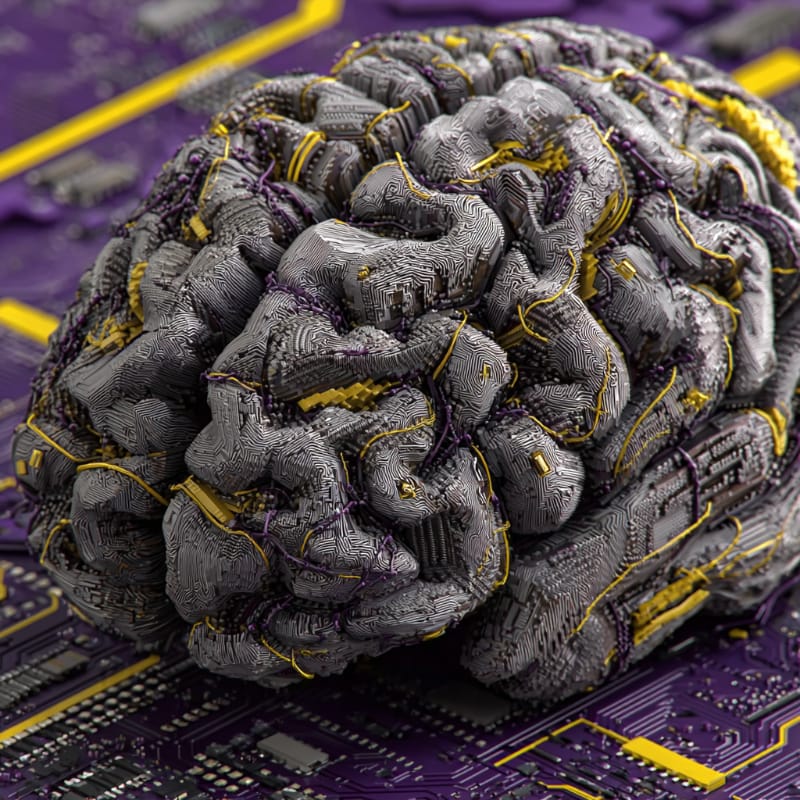- Cidpedia
- Posts
- I want a cure
I want a cure
issue #6 JULY 17 2025
🌟 Central Texas Resource
ALWAYS FRESH-Start your week empowered-CIDP updates, resources, and encouragement await!
Trusted Information and Community for CIDP Patients, Caregivers, and Professionals
www.cidpedia.net
Table of Contents
Editor’s Note: The Year of Pattern and Progress
Mock Research Team Update: Year 4 – From Collection to Meaning
Feature Article: Decoding the Data—Emerging Insights and Turning Points
Team Spotlight: Above and Beyond
Patient Voices: From “Lab Subject” to Research Collaborator
Ask the Team: Facing New Questions
Resource Corner
Disclaimer

Mapping
✉️ Editor’s Note: The Year of Pattern and Progress
Welcome to Issue #6 and Year 4 of our “I Want a Cure” series. After last year’s whirlwind—expanding volunteer cohorts, rolling out new treatment protocols, and collecting vast streams of clinical and lab data—our Phoenix Peripheral Neuropathy Research Institute (PPNRI) shifts focus from quantity to meaning. This is the year of pattern recognition, advanced analysis, and the first glimpses of real-world impact.
Day by day, our team is connecting dots: unearthing how genes, environment, and treatment habits all intersect in CIDP. They’re solving new puzzles and, just as often, discovering new ones. Let’s join them as they turn data into discoveries—bringing fresh hope to the entire community.
This is all fictional mock-up for demonstration only.
🧬 Mock Research Team Update: Year 4—From Data Mountain to Meaningful Results
A year ago, walls of the Phoenix lab were lined with freezers, sample racks, and blinking monitors. Today, whiteboards fill with string diagrams and digital dashboards burst with visualizations. The team’s focus: making sense of over three million data points gathered from 110 dedicated volunteers.
Dr. Elena Carter, Principal Investigator, has transitioned from hands-on troubleshooting to leading weekly “data synthesis sprints.” Her vision: identify trends in nerve conduction, immune patterns, and self-reported symptoms that have practical, everyday meaning for people living with CIDP.
Dr. Amara Singh has piloted a new home-based nerve conduction device, mailing out kits to 20 rural patients. This democratized nerve data gathering is turning up early hints that some relapses might be predicted by subtle electrical changes two weeks before symptoms flare.
Dr. Marcus Nguyen has expanded the biomarker panel to include genomic and proteomic markers, working with bioinformatics partners to explore everything from rare gene variants to metabolite clusters. His current focus: a pattern of glycan signatures that may distinguish fast vs. slow progressors.
Mr. Luis Torres orchestrates data security and sample flows across four sites, introducing a “direct-from-home” courier system that’s sped up turnaround and reduced processing errors by 15%.
Ms. Sara Patel now heads the “Participant Partners” initiative, inviting volunteers to bi-monthly results-feedback sessions—a two-way street where patients’ perspectives fine-tune research and shape which findings move fastest into new pilot trials.

Wired In
🔬 Feature Article: Decoding the Data—Emerging Insights and Turning Points
A Year of Questions, Clues, and Breakthroughs
This year, the Phoenix team unleashed the massive machinery of data science on CIDP research.
1. The Great Pattern Hunt
Through machine learning analysis and classic statistics, the team identified three “phenotypes” of CIDP based on nerve conduction, immune markers, and clinical course:
Rapid fluctuators: Sudden onset, high relapse rates, frequent hospital admissions.
Gradual accumulators: Slow progression, steady disability, strong correlation with persistent anti-glycan antibodies.
Responsive remitters: Early strong response to IVIG or SCIG with long-term remission, often carrying a specific Fc-receptor genetic marker.
2. Lessons from Home-Based Testing
The “HomeNerve” trial, led by Dr. Singh, enabled patients to upload real-time nerve conduction data via a smartphone app. This innovation led to more frequent monitoring and better detection of early changes, especially among participants in rural areas.
Key outcomes:
Flare-ups could often be predicted seven to ten days before symptoms peaked.
Early intervention (such as medication adjustment or rest) prevented hospitalizations in 18 cases.
The approach boosted participants’ confidence in self-monitoring and early reporting.
3. How Biomarkers Are Changing the Game
With over a hundred volunteers in follow-up, the team noticed:
Persistently elevated sNfL and high IL-6 levels flagged risk for motor decline.
A newly detected set of metabolic markers tracked well with both patient-reported fatigue and drop in nerve function.
In 20% of participants, a decrease in IL-10 (“the peacekeeper” cytokine) was linked to faster progression and more severe attacks, leading to exploration of pilot supplements to boost IL-10.
4. When Data Bites Back
In true scientific fashion, results didn’t always match the hypotheses. One anticipated “predictive” marker—certain anti-myelin antibodies—proved unreliable, showing up just as often in healthy controls as in those with active CIDP. This prompted an honest, publicly shared “research misstep” message, reinforcing that transparency builds trust.

Focused
Deep Dive: The People Behind the Progress
Name & Role | This Year’s Focus | Personal Connection |
|---|---|---|
Dr. Elena Carter | Connecting 15 external sites to expand data sources; leadership in multi-site trial design | Driven by memories of misdiagnosed patients |
Dr. Marcus Nguyen | Expanding to whole-genome sequencing; analyzing rare antibody profiles | Family roots in undiagnosed autoimmune illness |
Dr. Amara Singh | HomeNerve protocol launch & patient tech support; innovating patient-led science | CIDP patient and research “translator” |
Mr. Luis Torres | Logistics for direct-from-home testing and real-time sample tracking | Known for “making the impossible possible” |
Ms. Sara Patel | Participant Partners program and bi-monthly community data reviews | Drove advocacy after loved one’s CIDP journey |
🏥 Patient Voices: From "Lab Subject" to Research Collaborator
David Martinez: “Seeing my feedback actually change protocol—like moving my blood draw to afternoons so I could drive safely—makes me feel respected. I’m not just a number here.”
Maria Santos: “The HomeNerve kit helped me catch a relapse early. I feel ownership over my health now in a way I never did before.”
James Thompson: “For the first time, hearing my day-to-day struggles with leg cramps reflected in the study results made me realize I’m part of something bigger than myself.”
“I used to dread appointments; now I look forward to asking the team, ‘What did you learn from my data?’ It’s empowering to be seen not just as a patient but as a core part of the experiment.”
❓ Ask the Team: Facing New Questions
Q: How do you keep data meaningful, not just overwhelming?
Dr. Nguyen: “We start by letting the stories point to the signals. If several people report fatigue right before their nerve function drops, that’s a pattern worth chasing—no matter what the numbers say.”
Q: Any early wins in personalizing treatments?
Dr. Singh: “Yes—patients with the ‘responsive remitter’ genetic pattern are now on track for less frequent treatments and more sustained periods of remission, saving both hardship and resources.”
Q: What’s the team most proud of this year?
Ms. Patel: “Seeing volunteers’ everyday feedback—like morning stiffness or travel demands—directly translate into protocol tweaks. It’s real, lived science.”

We Got You
🗣️ Community Voices: Hope in Action
“Being part of this team means my questions actually change what gets tested.”
“Remote diaries let me track good days and bad—now, the medical team and I are actually on the same page.”
“I told Ms. Patel I’d felt a relapse coming; that early warning got me an appointment before things went south. That might have changed everything.”
🧰 Resource Corner
GBS|CIDP Foundation International – research news, clinical trials
ClinicalTrials.gov – ongoing CIDP studies
Shining Through CIDP – patient stories & webinars
NeurologyLive – new CIDP therapies and expert interviews
Phoenix PPNRI Volunteer Portal – how to join studies, access updates
Next Issue Preview:
Year 5 brings advanced data modeling, cross-center trial expansion, and—potentially—the first signals of a breakthrough. Can the Phoenix team move from pattern recognition to precision prediction and even earlier intervention? Stay tuned as the race for a cure gathers speed!

⚠️ Disclaimer |
Thank you for following Issue #6 of our "I Want a Cure" journey. Next week: Data reveals its first secrets, unexpected discoveries emerge, and our team faces new challenges that will test their resolve and strengthen their commitment to finding a cure—one breakthrough at a time. |
The Phoenix Peripheral Neuropathy Research Institute is a fictional creation designed to illustrate real-world research processes and challenges. While our characters and specific scenarios are imaginary, the scientific principles, research methodologies, and patient experiences described are based on documented patterns in actual medical research and patient advocacy literature. |

Reply